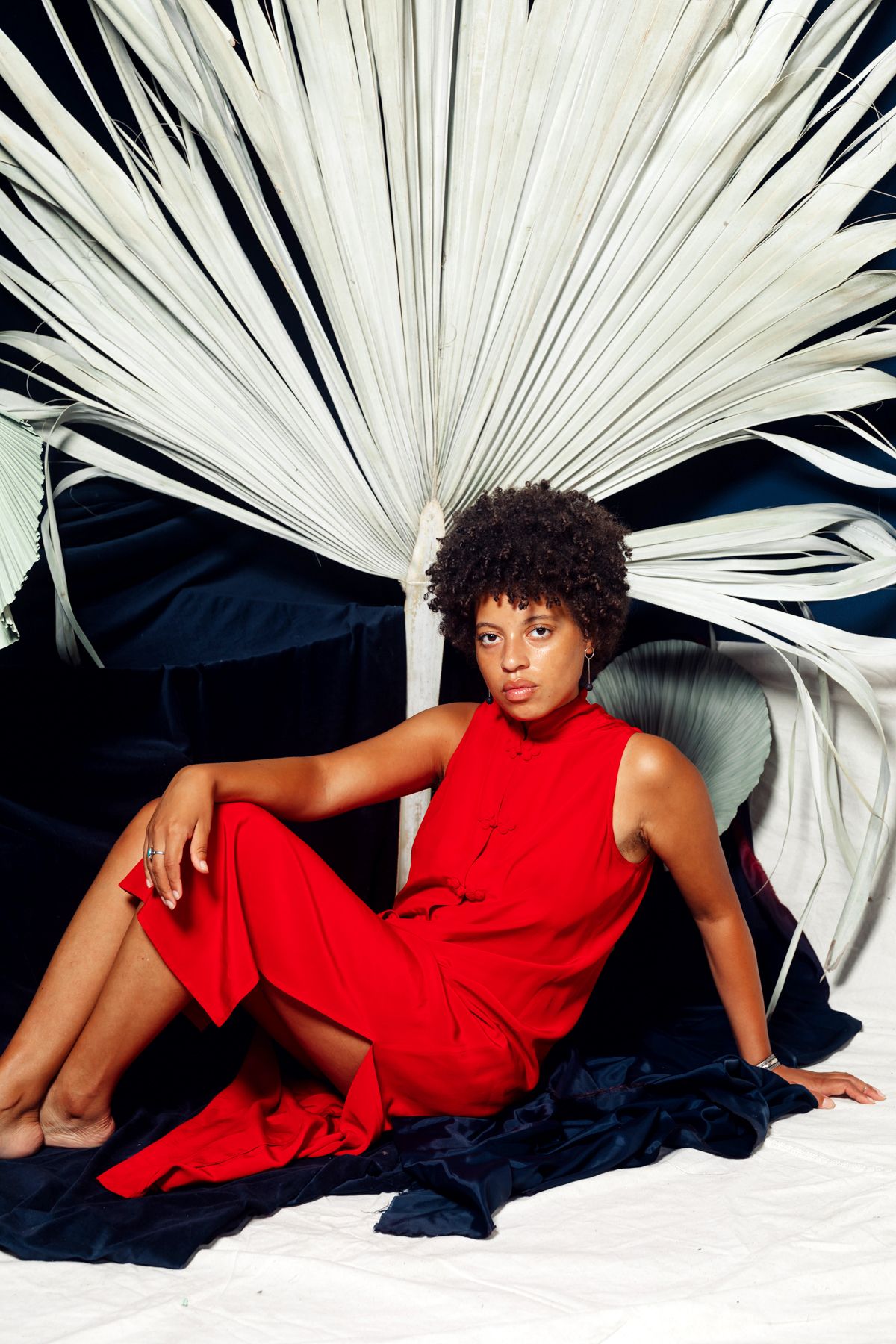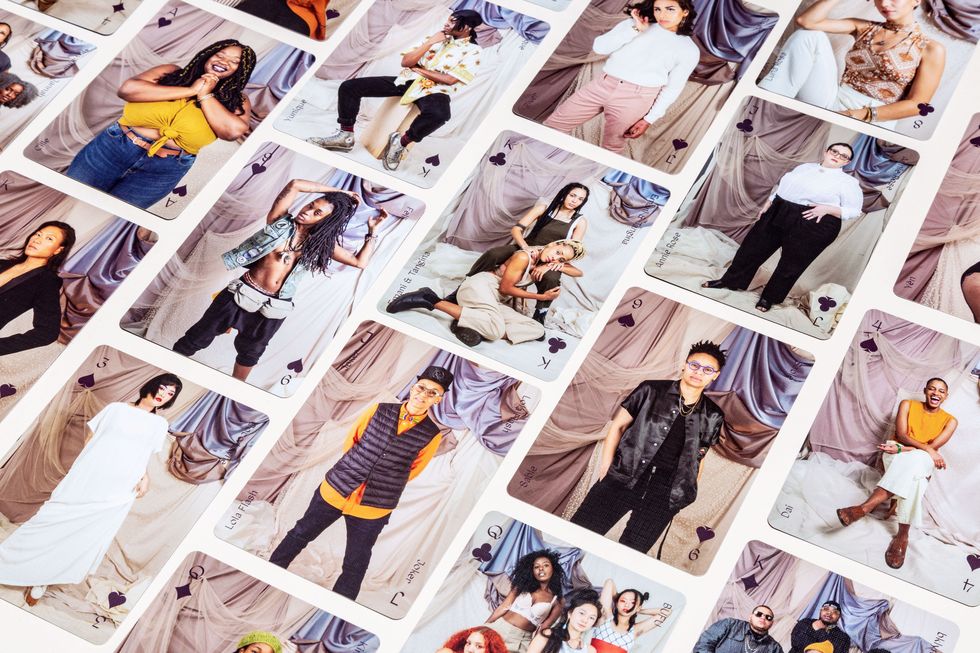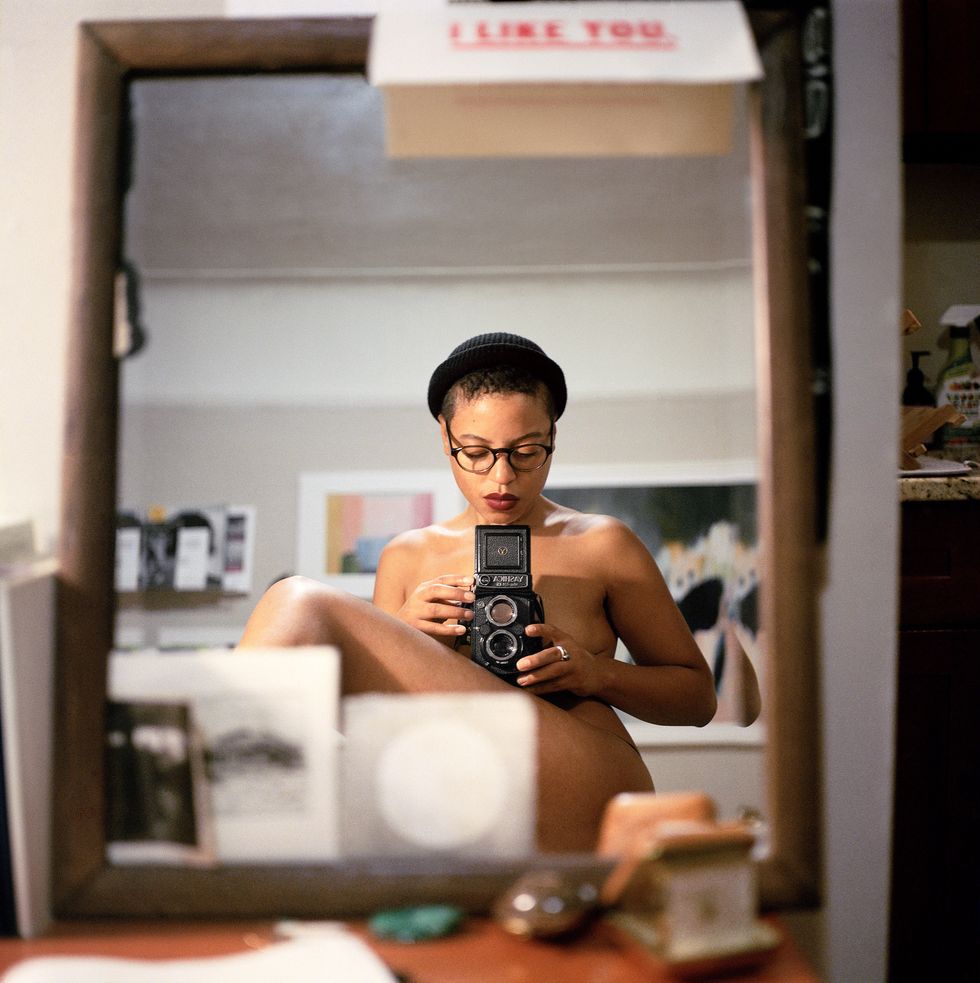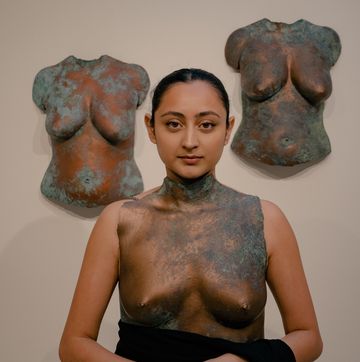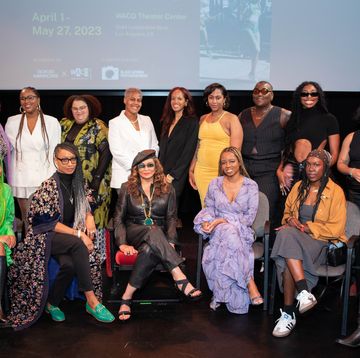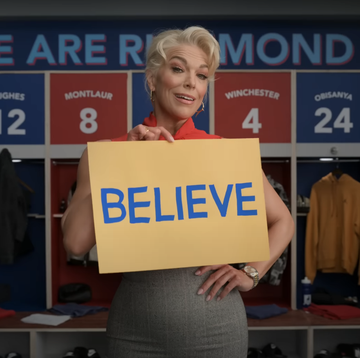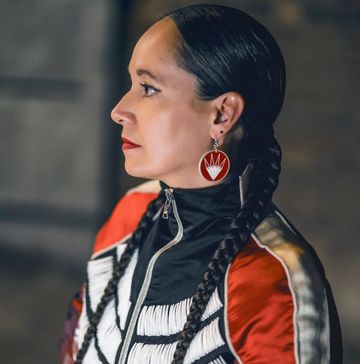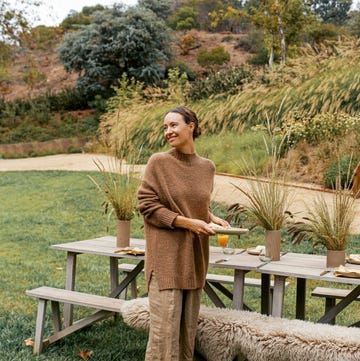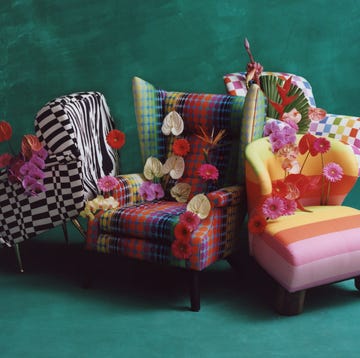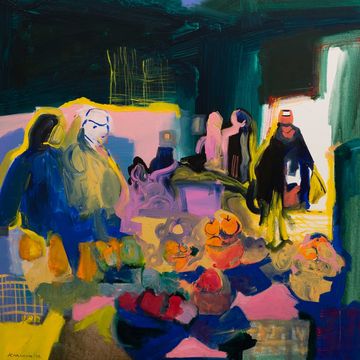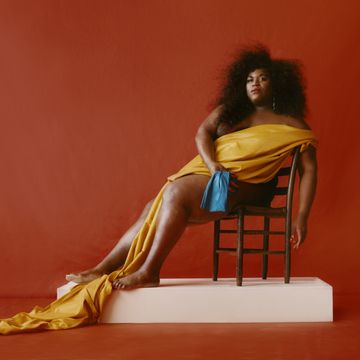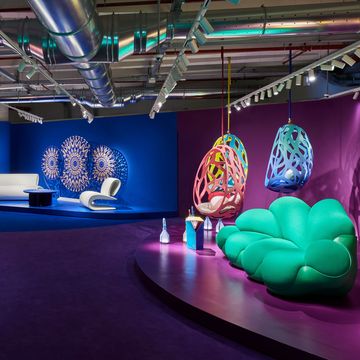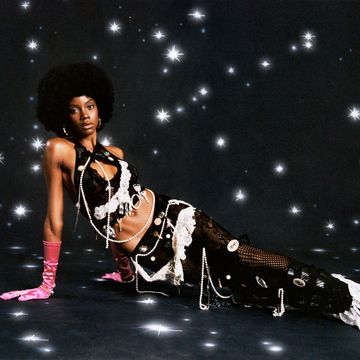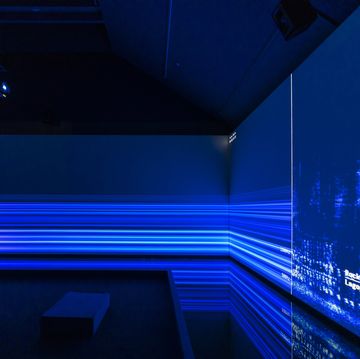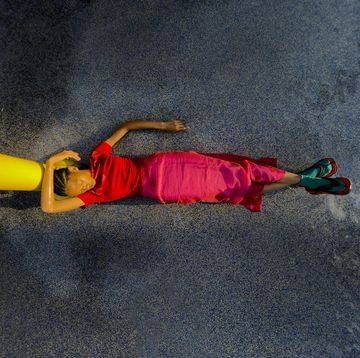There’s a fluid thread of seduction quietly present in Naima Green’s portraiture. This energy is always there, soothing and coated in softness, from the start of her career. She introduced her ongoing series Jewels from the Hinterland in 2013, photographing Black sitters, including artists, writers, and creatives she felt drawn to, in local urban green spaces from Brooklyn to Oakland. The portraits are striking, pure, and inherently genuine, their subjects surrounded by verdant foliage. There’s no reductive narrative of trauma or urban tragedy. It’s Black folks simply being: beautiful, still, and present, offering the viewer abundant and gripping gazes. Green’s enrapturing photographs have been exhibited at ICP, Studio Museum in Harlem, BRIC, Mass MoCA, and now, an impressive debut solo museum show in New York.
Brief & Drenching closes Sunday, April 18 at Fotografiska New York. The exhibit’s title is an ode to Audre Lorde’s seminal literary work Zami, and its atmosphere is decadent, resembling a sprawling, stylish, sparsely furnished apartment with moody lighting and the possibility of wine with a lover or bestie. Pur·suit, a rich and robust portraiture series of intergenerational LGBTQIA+ sitters, is the instant showstopper, with an eclectic mix of people including the revered photographer Lola Flash, interdisciplinary artist Sable Elyse Smith, QTBIPOC collective bklyn boihood, and womxn of color collective BUFU photographed against silky draped pastel backdrops. And the Black queer joy continues flowing, as seen in the portrait Untitled (Riis), 2017, where Black queer people revel in leisure, laughter, and sunshine. In Green’s first film, The Intimacy of Before, the artist engages with her own body in an intensely intimate physical conversation.
Green is a young, gifted, and Black artist who exquisitely captures other young, gifted, and Black geniuses, as seen in her October 2020 Harper’s Bazaar digital cover of a sultry Solange Knowles wearing Telfar boots in a black marble bathtub. Green’s photographic eye is joyous, sexy, and compelling, and Black queer womxn are wonderfully prioritized in her work in triumphant and mesmerizing ways. In a generous and honest conversation with ELLE.com, the Brooklyn-based photographer reveals letting go of the unstimulating and the stagnant, and leaning into cherishing her solitude in 2021 and beyond.
In Brief & Drenching, we see large-scale portraits from Pur·suit, your 54-card deck featuring queer womxn, trans, nonbinary, and gender-nonconforming individuals. The beauty behind these portraits is the idea of FUBU (For Us By Us), where you as a Black queer artist are vividly capturing the LGBTQIA+ community, specifically Black and POC. Can you talk about the joy and duty behind that?
The joy is profound in this work, as are the challenges in my desire to represent my community and those who participated in Pur·suit as generously as possible. In that duty, I was holding things tightly—worried about disappointment from those who were not included in the deck (which a few people expressed, sometimes inappropriately) and the impatience around making an archive with all of the sitters. The archive I’m building is taking, and will take, much time, resources, and coordination. So much of my work right now is talking to people—scheduling interviews, commissioning poetry and music and workshops, and emails and emails and emails. Even through these more administrative moments, when I’m not making pictures but allowing my practice to become other forms, I’m finding so much pleasure. I’ve been talking to couples who also work together, people like Kiyanna and Jannah of BLK MKT Vintage, poets and writers Angel Nafis and Shira Erlichman, Ericka Hart and their partner and manager Ebony Donnley, fashion designers Jessie Levandov and Auston Bjorkman—the list goes on. I’m listening and learning so much about what some of the guts and bones of these relationships look like, and that is an ultimate joy for me.
I have to learn to let the rigidity and fear of disappointing people go. I have to remember that my pace is okay; I can’t rush for other people’s demands on my work. And, most importantly, I have to learn that even when I’m trying my best, self-funding projects, and working multiple jobs, that it is okay for people to be disappointed sometimes.
Pur·suit was originally inspired by Catherine Opie’s Dyke Deck, but Pur·suit is more expansive in representing a bigger spectrum of Black and Brown queer, trans, nonbinary, and gender-nonconforming people. This body of work has been out for two years. Can you talk about its resonance now in the QTBIPOC community?
The project launched during Pride in 2019 with a party and frenzy and fun. While only eighteen months ago, it feels so far away! Pur·suit is barely a toddler. What I’ve found is community activation is, and continues to be, the heart of this work—it is the pleasure of shuffling through, of finding a friend, of discovering something new, of looking closely.
There’s a compelling juxtaposition in the exhibit, with the inclusion of Self-Portrait (I like you), 2017, and a recreated moment where viewers can take a selfie in front of that same mirror from that self-portrait. Can you speak further on this touching interaction?
Portrait making is about self-recognition. I didn’t include my physical body in my work until 2017, and even then, most of those images were shared in critiques and not in public spaces. This all relates back to the loosening I mentioned earlier: the shifts I made in seeing myself, and the invitation into my home. By bringing a mirror into the exhibition that sat on my desk for six years, I am bringing all of the life that happened in my space into the gallery. It’s an offering and opening for strangers to “like” themselves by reading that “I like you” card, and to see me, too.
As I walked through Brief & Drenching, what touched me most was its warm intimacy and moodiness. It feels like a beautiful apartment that flows with sensuous energy and has portraits of family members you love. Can you talk about the intent behind this atmosphere?
Thank you! The living room is an anchor for me in that way—bringing in antique furniture that may have also lived in my apartment and welcoming visitors into this space of community. Criticality, lushness, and sensuality are needed right now more than ever. It is a wash, a rinse, a dunk—“brief and drenching.”
What were some silver linings that 2020 offered you and your art practice?
I love collaborating with people, and despite the inability to make the volume of portraits I anticipated creating in 2020, I was still able to connect with people and go deep rather than wide. A very clarifying conviction that touch is at the core of my praxis. 2020 was full of so much grief and beauty and clarity that it often feels dizzying to hold such extreme emotions at one time. Fortunately, I was able to let a lot go—stale relationships and spaces I was holding onto for comfort and safety that weren’t serving me at all. My love for Prospect Park grew to greater depths I didn’t even think were possible. I think I’ve walked through every corner of the park by now. I love spending time with myself. I pickled every root vegetable that entered my home and loved it.
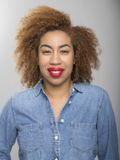
Jasmin Hernandez is a Black Dominican Yorker based in Harlem, New York. She is an author and founder of Gallery Gurls, which reps for BIPOC in the art world.
